Love at first sight
Annandale Distillery has lasted nearly two centuries, had three generations of whisky ownership and a 90year hiatus where it was a used in porridge production, and for agricultural uses including the housing of livestock.
Now in its fourth era of whisky production under the stewardship of Prof. David Thomson and Teresa Church who after an extensive restoration have safeguarded Annandale Distillery for generations to come.
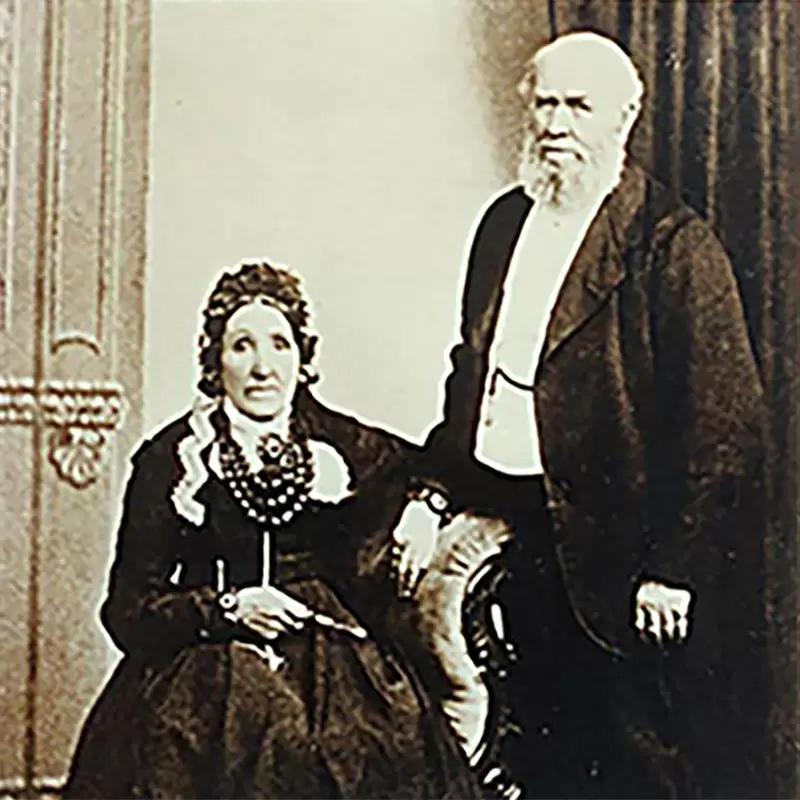
1830
Originally built
The distillery was originally built in 1830 by George Donald, a former excise officer from Banff in Aberdeenshire. He chose the site for building the distillery as there was a pre-existing clearing in the woods with a plentiful water source, which is essential for both the production of whisky, and to power the water wheel which would run the internal grain mill for the barley. The abundance of peat in the area meant that George Donald could fuel the kiln for the malted grain by using locally sourced peat from peat bogs just three miles away. The damp and mild climate was also perfect for the maturation of the whisky, in the original bonded warehouse which George Donald built on the site. The beautiful and iconic pink sandstone was locally quarried to build the distillery and dunnage warehouse. The region is famous for this uniquely coloured stone, which can be seen in many other significant buildings nearby.
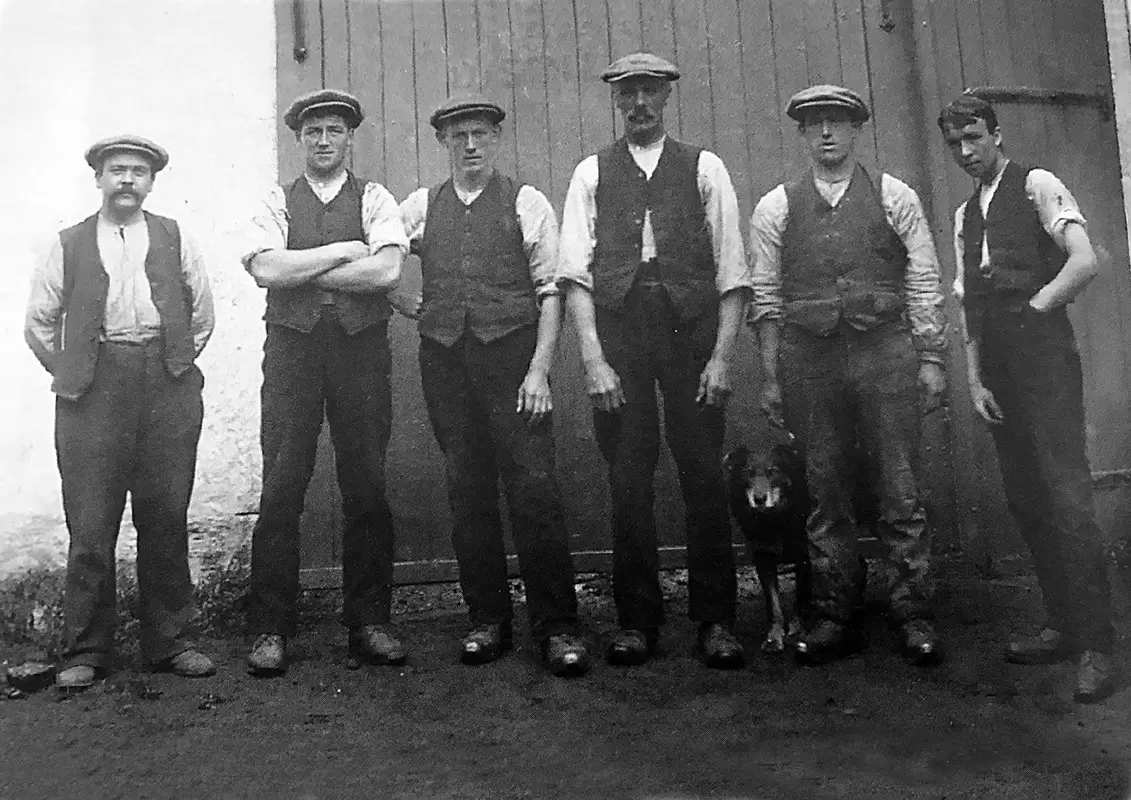
1836
Distillery Established
Annandale Distillery was established in 1836, making it one of the earliest ‘legal’ whisky distilleries in Scotland. The Donald family lived in the farmhouse to the rear of the distillery during their time here. George, his wife Margaret, and their children, ran the distillery for almost 50 years. The peated style of whisky was produced here throughout the Donald’s family’s time at Annandale Distillery, using traditional techniques and equipment. Margaret Donald was said to be very hands on, working as a still (wo)man and firing the stills over an open coal fire. It would have been a very labour-intensive job, and very difficult to maintain a consistent temperature for the stills when producing the spirit to fill into casks.
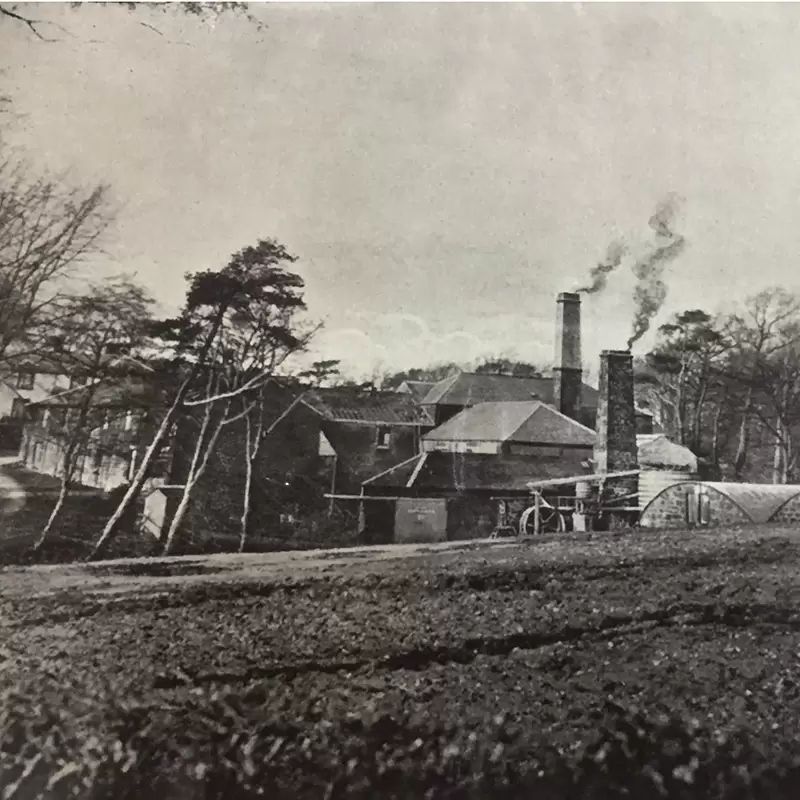
1883
John Sykes Gardner
In 1883 the distillery was transferred to John Sykes Gardner after the death of George Donald. John was a wine and spirits merchant from Liverpool. He likely gained knowledge of the distillery when receiving shipments of casks from the then bustling harbour in the town of Annan. John continued to produce peated single malt whisky for the next ten years. He updated the distillery with new machinery and buildings over the next 10 years. This resulted in a more consistent spirit than what was previously produced.
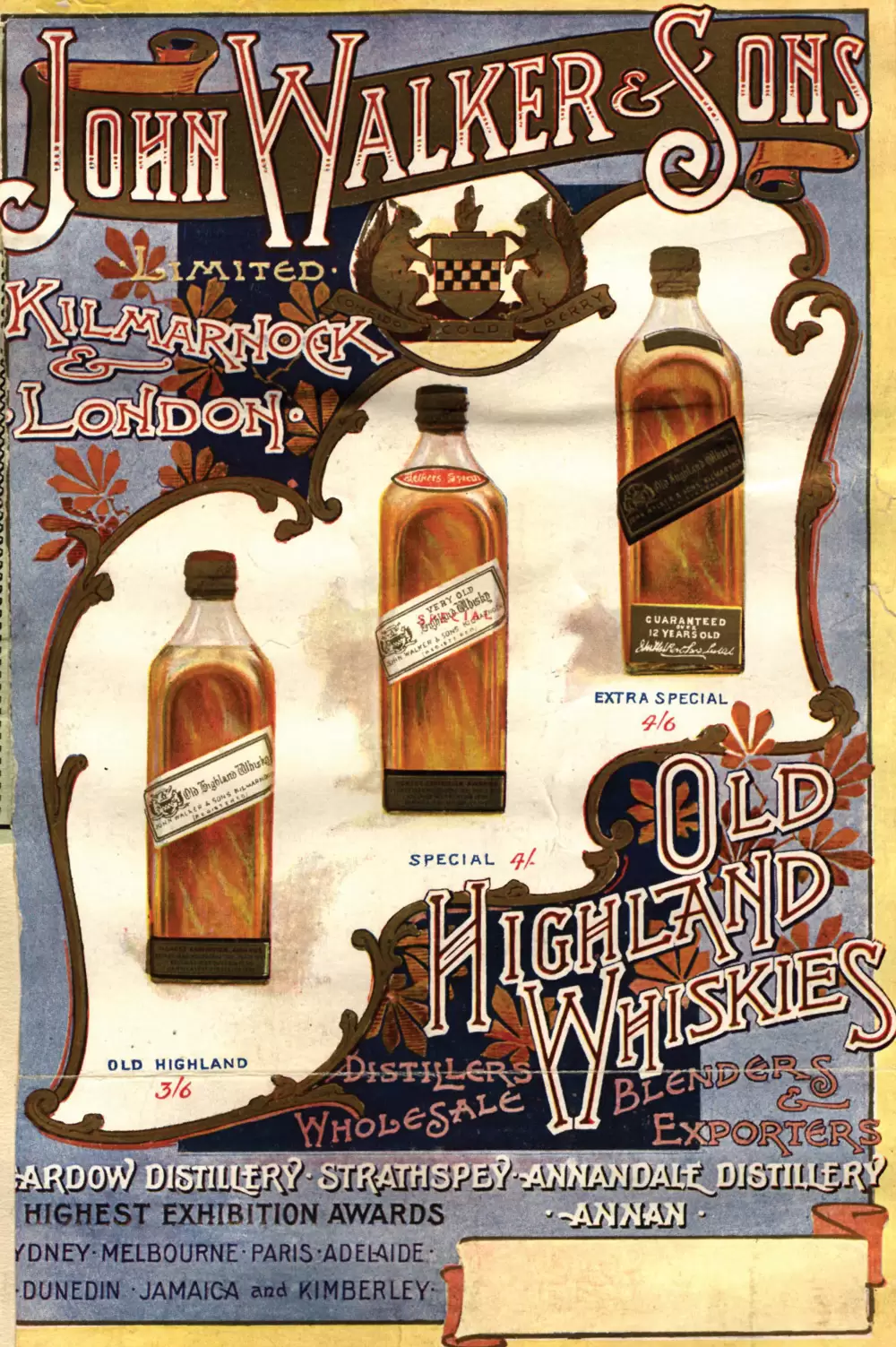
1893
Johnnie Walker & Sons
Johnnie Walker and Sons bought the distillery in 1893, it is believed they used the spirit from Annandale Distillery as a source of peated whisky for their blends. The iconic Charles Doig pagoda roof was added to the distillery in the 1890s. This specially designed structure is an iconic part of many distilleries in Scotland but is one of only five known originals to survive. The tall brick chimney was also added in the Johnnie Walker period of Annandale Distillery’s history. Johnnie Walker expanded the warehouse capacity by building an extra story on top of the original brick dunnage warehouse.
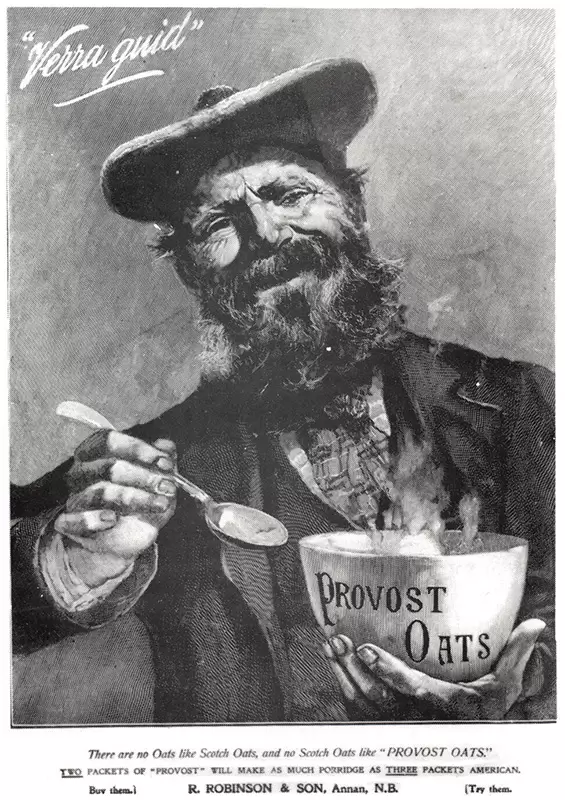
1918
Distillery Closes
Production at Annandale Distillery ceased shortly after the end of WW1 in 1918, due to the difficulties in maintaining production. The once abundant resources that had drawn Johnnie Walker to buy the distillery had started to disappear, and the global market for whisky was crashing as a result of the many post-war temperance movements. Johnnie Walker kept the distillery buildings and site until 1924 but dismantled and removed most of the machinery and some parts of the main building. The lease was then passed on to the Robinson family, who were farmers.
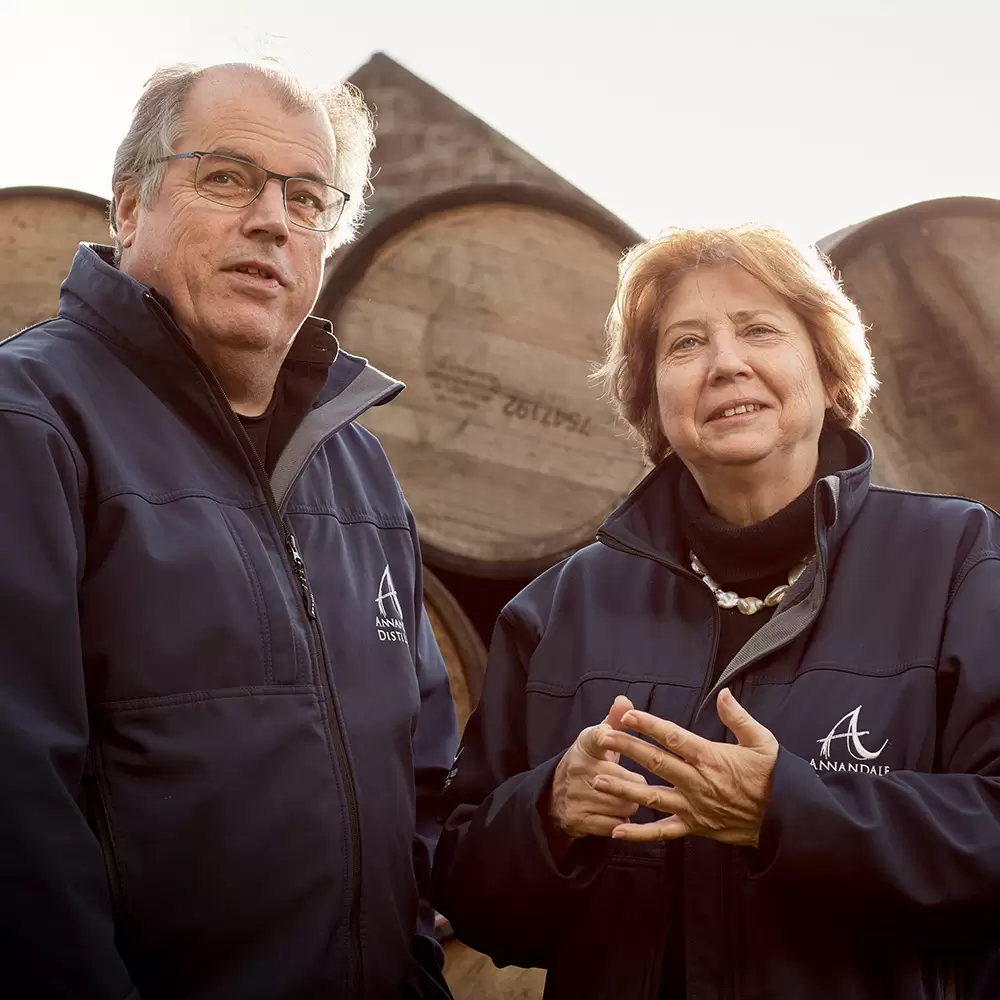
2007
New Owners
The buildings were used for farming until 2007, when Professor David Thomson and Teresa Church bought the distillery site, and began an extensive restoration. They spent £17.5 million restoring the buildings and converting them back into a fully functional, working distillery. It took a while but in 2014 the South of Scotland was once again producing fine Single Malt Scotch Whisky.
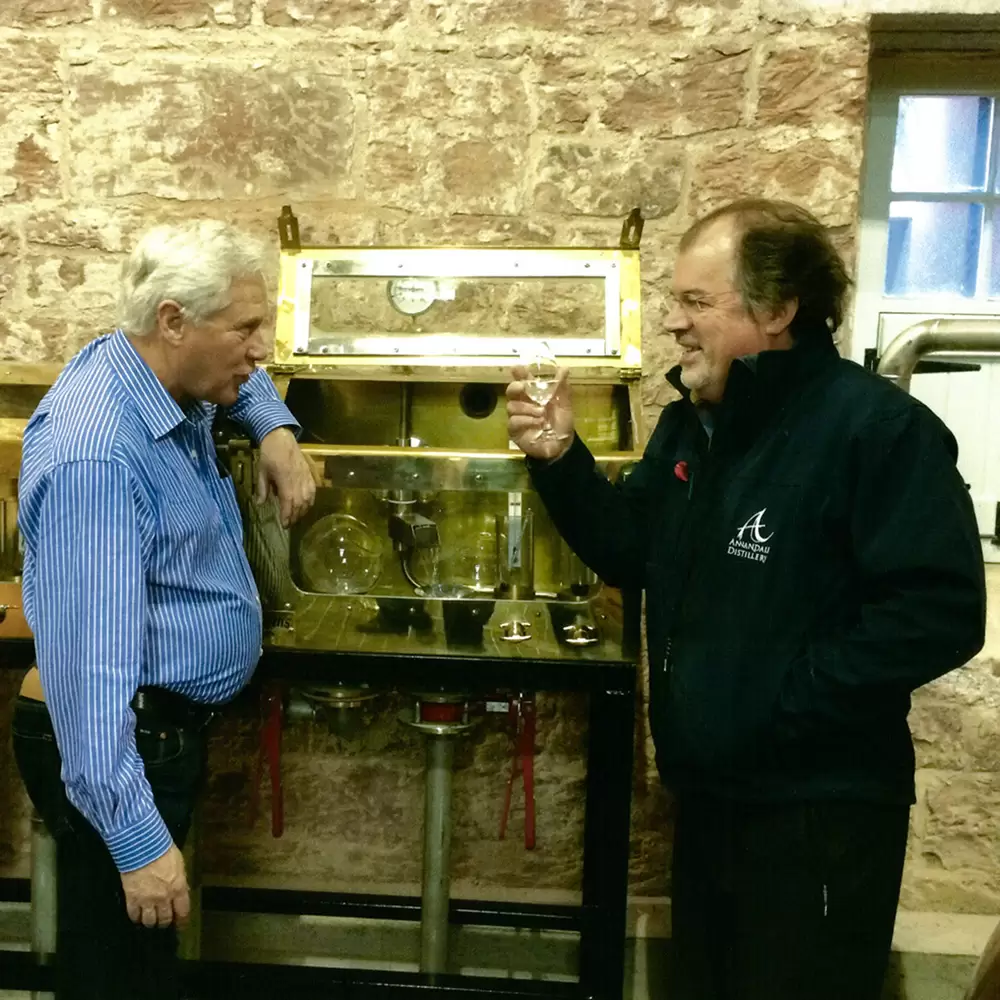
2008
Dr Jim Swan
Dr Jim Swan (sometimes known as the ‘Einstein of Whisky’) was commissioned to design a whisky-making plant for the distillery. Professor David Thomson met Dr Swan at a sensory conference in London in the 1980s. They kept in touch throughout the years and Dr Swan was the first person Professor Thomson called when he needed a design for the operational facilities after purchasing the distillery.
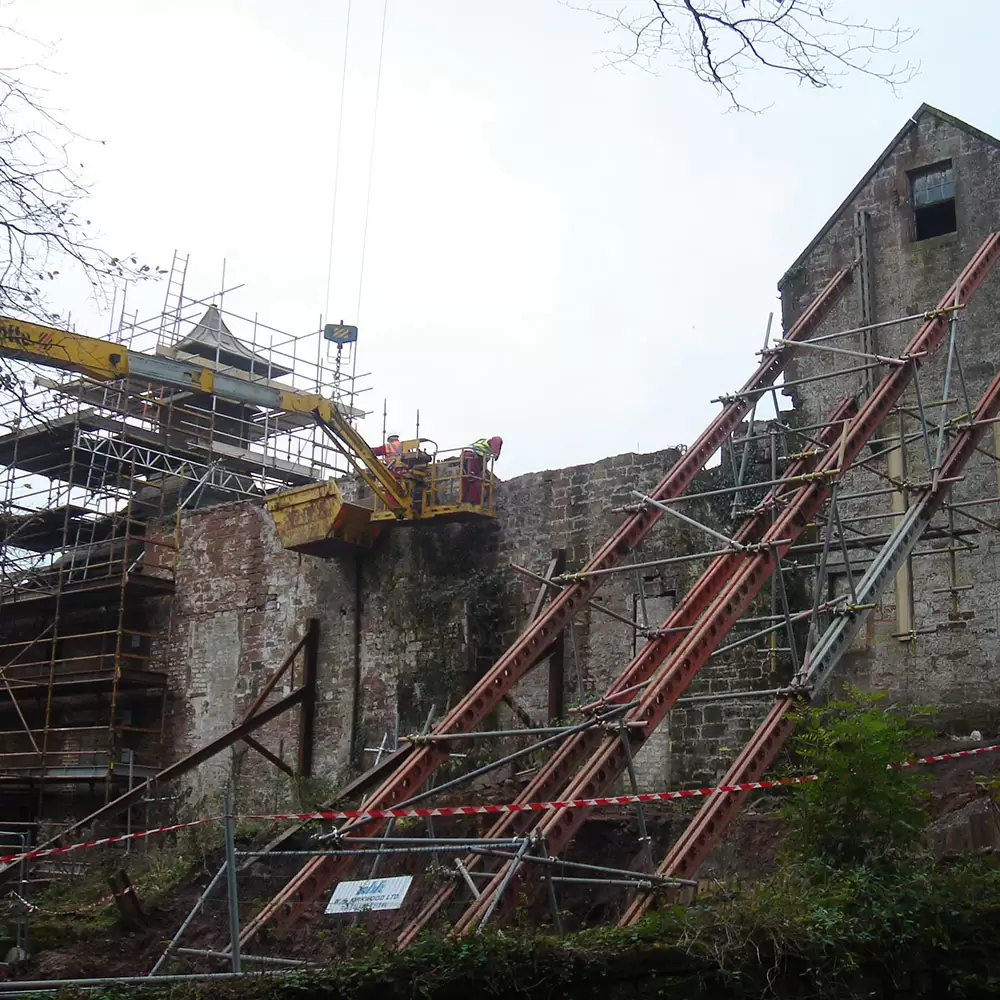
2009
Renovation Begins
A 5-year renovation, costing £12.5 million breathed new life into Annandale Distillery; whilst making use of the historic building and what was left of the site. The roofs of the main building and the bonded warehouse were in a state of disrepair. Some research revealed that the slate had been sourced from North Wales, and a good match was found and repurposed from a demolished building. The historic pagoda roof was in remarkable condition for its age and is one of only 5 original Charles Doig pagoda roofs left. The mash house section of the main building needed some precision engineering work done to stabilise the structure of the building before renovations could take place. This involved the demolition of a section of wall in a state of near collapse. Luckily, the pink sandstone needing replaced could be sourced using what was left of a demolished building in Glasgow. This was from the exact quarry that the Donald family sourced from when the buildings were originally built in the 1830s.
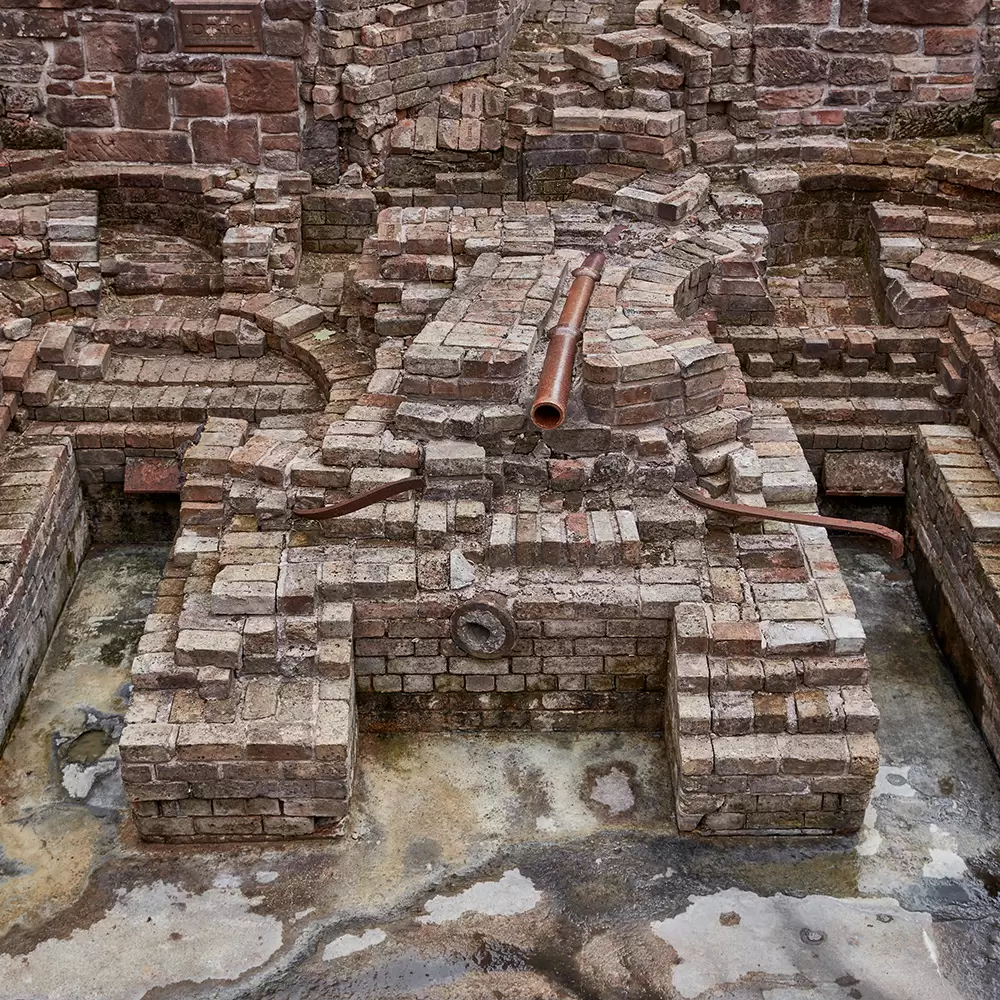
2009/10
Excavations
Glasgow University Archaeological Research Division (GUARD) was invited to excavate the property where they discovered the original still house. The once-buried surviving archaeology of the brick hearths is exceptionally preserved, and even contains some examples of where the copper from the stills was melted on to the brickwork below.
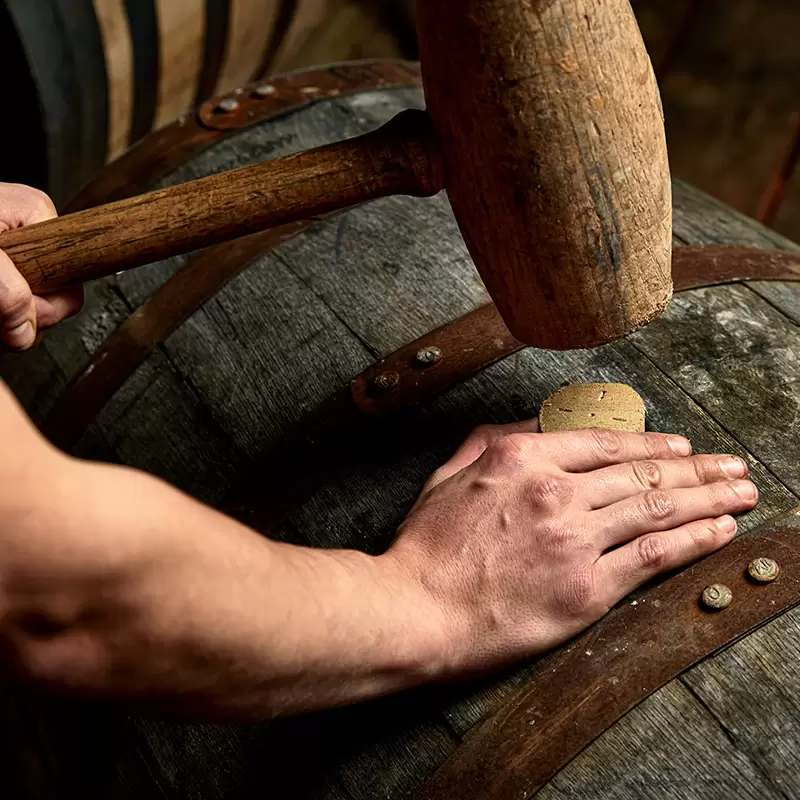
2014
Production Re-commences
On 9th November 2014, the first spirit came from the stills, which was filled into cask number 1 on 15th November 2014 to be matured in the original 1830s warehouse for a minimum of 3 years, before it could mature into single malt, single cask scotch whisky. The production team work tirelessly creating the Single Malt, Single Cask scotch whiskies, ‘Man O’ Words’ and ‘Man O’ Sword’, named after Robert Burns and Robert the Bruce, respectively. The production of these two brands of single malt, single cask whisky, means we can achieve both unpeated and peated styles of our whisky so consumers can enjoy a variety of styles of whisky from Annandale Distillery.
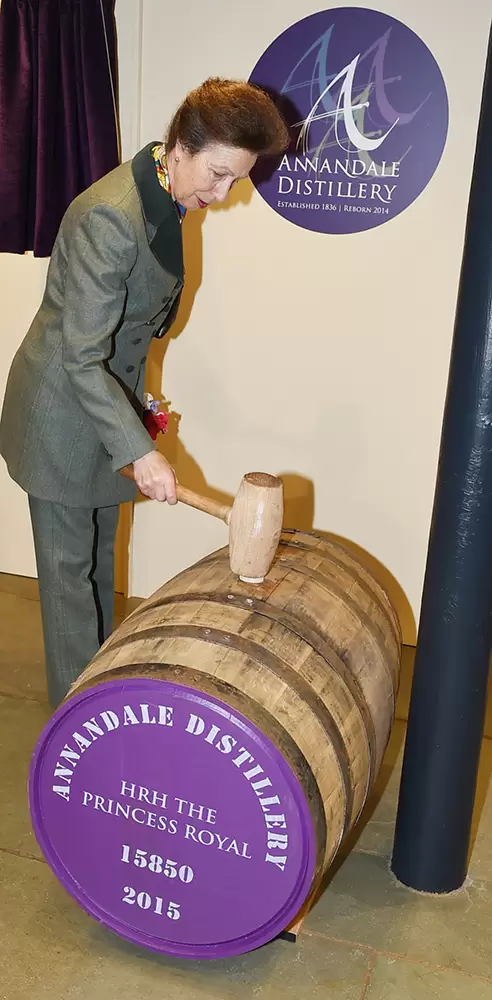
2015
Visitor Centre Opens
The Princess Royal reopens the distillery on 10th September 2015 following a £10.5 million restoration and now welcomes over 25,000 guests every year.
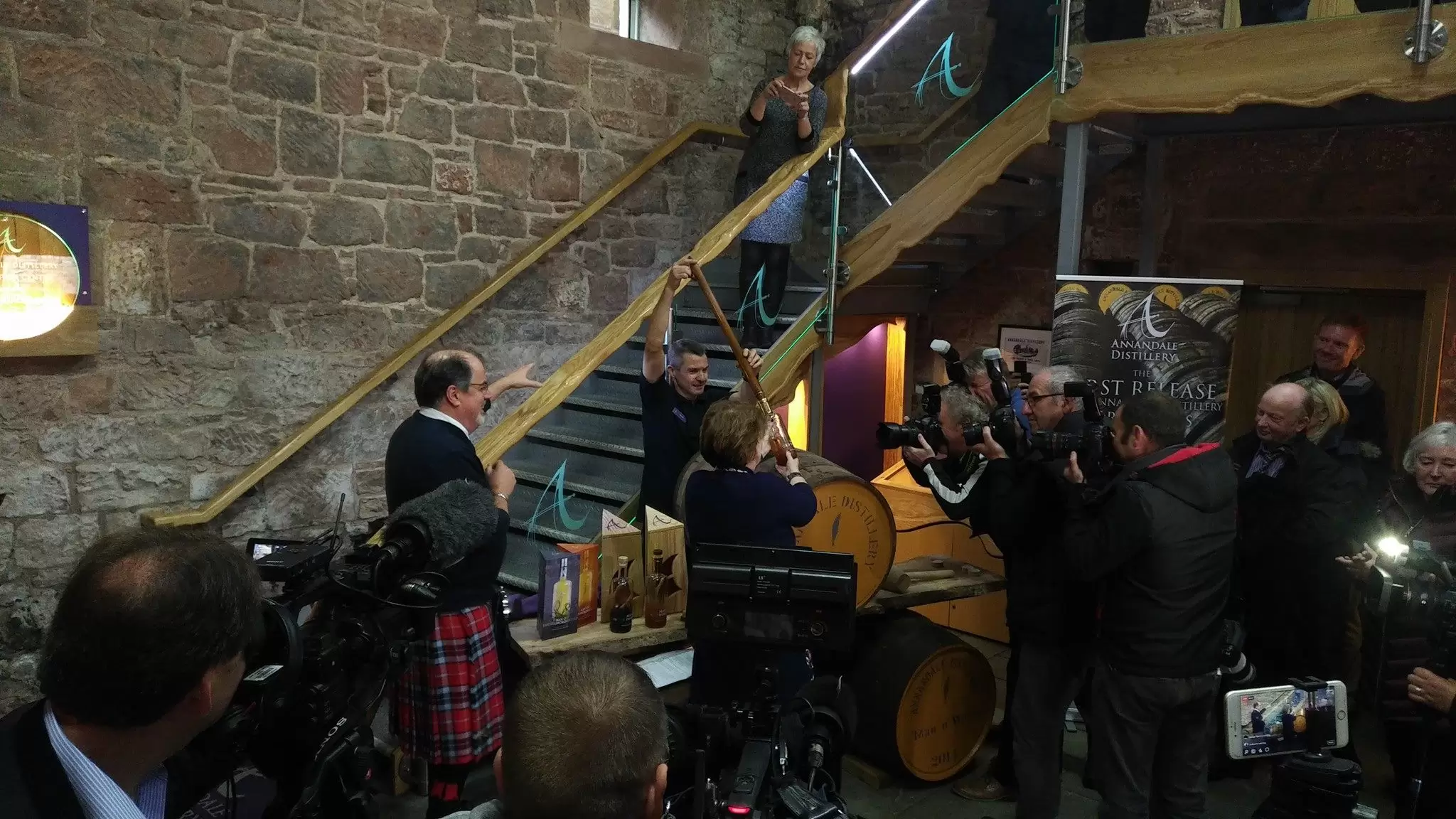
2018
First Bottling
The spirit produced by Annandale Distillery when it was reborn in 2014, had to mature in oak wood casks for a minimum of 3 years by Scottish law, and so was bottled in 2018. This first bottling was attended by the press and guests of Professor David Thomson and Teresa Church.
ENJOYED AROUND THE WORLD
Our whisky can be purchased by whisky fans in many countries around the world either via our Annandale’s E-Commerce Shop, or from our many international distribution partners shown below.
Annandale is proud to be represented in the countries listed below.
Please click on your chosen country to be taken to our trusted distribution partner.
Austria, Australia, Belgium, China, Denmark, Germany, Holland, Italy, Luxembourg, Malta, New Zealand, Norway, Sweden, Switzerland and Taiwan.
If you wish to talk to us about becoming a distribution partner please contact Head of Sales Chris Pateman
THINKING AND DRINKING FINE SINGLE CASK SINGLE MALT SCOTCH WHISKY
Making Single Malt Scotch Whisky is part science and part art and in this section we explore them both. In a series of short articles, we unravel the mysteries of whisky-making and dive in to the practical subtleties of producing the very finest Single Malt Scotch Whisky at Annandale Distillery. Read them at your pleasure.
South of Scotland Distilleries
From the very start, we were intrigued to know why there had been so few whisky distilleries in the South of Scotland. At that time (2006/7), Annandale Distillery had been…
The Myth of Lowland Terroir
Southern Scotland falls within the ‘Lowland’ whisky region of Scotland. According to various of the coffee table books on Scotch whisky, Lowland Single Malts are characteristically light in colour and…
Sensory Challenge
Having disabused ourselves of any notion of regional terroir, this left us with a blank canvas for creating sensory profiles for Annandale’s Single Malts. The next decision was relatively easy:…
Sensory Profiling
With over 100 Single Malt Scotch whisky distilleries (in 2007) producing multiple expressions (e.g. age, cask type/finish, etc.), there are literally thousands of Single Malts for consumers to choose from.…
DR Jim Swan
Jim Swan and David Thomson had known each other since the mid-1980s when they’d met at a sensory conference in London. Jim was specialist in the chemistry and sensory evaluation…
A FUSION OF MODERN AND TRADITIONAL
The Globe Inn, Dumfries has been named Scotland’s most historic pub by Scottish Field Magazine. Established in 1610, The Globe Inn, Dumfries was the favourite Howff’ of Scotland’s national poet Robert Burns, who spent many a night and wrote many a verse at this historic venue. You can eat at the same table as Robert Burns and explore the rooms that tell his story.
WHAT MAKES IT SO SPECIAL
Making Single Malt Scotch Whisky is part science and part art. As a scientist, I rejoice in the artisan aspect of whisky-making and sincerely hope that the human senses and the human mind will forever be the final arbiter of sensory maturity and sensory excellence rather than some mechanical device. Nonetheless, over the past 50 years especially, science has revealed some of the mysteries of whisky making and exploded some of the unhelpful myths without, I hope, ruining the mystique and the majesty of Scotland’s Single Malts.
This section of Annandale’s website comprises a series of short Technical Notes on various aspects of Single Malt Scotch Whisky production, from barley through to the mature product.
I’m deeply grateful to the late Dr Jim Swan and to Dr Gordon Steele for educating me in the science of whisky making and to Mark Trainor (Head of Production at Annandale Distillery) for schooling me in the practical subtleties of making the very finest Single Malt Scotch Whisky.
What is the correct way to drink whisky?
As a distillery owner, I’m often asked…… “What’s the correct way to drink whisky?”… “Should I add water?”… “Do you drink your Scotch on the rocks?” … “Is it OK…



